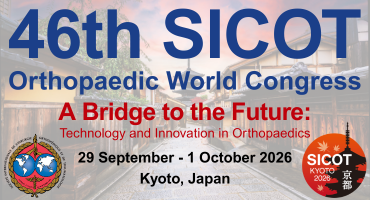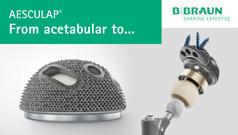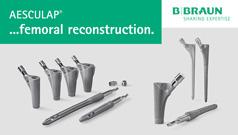Orthopaedic Surgery Training in the USA
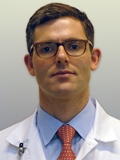 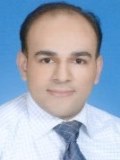 Alexander S. McLawhorn & Mohamed Sukeik Alexander S. McLawhorn & Mohamed SukeikNew York, United States & London, United Kingdom |
Orthopaedic surgery is a sought after surgical subspecialty in the United States (US) for many reasons. The community of orthopaedic surgeons in the US is generally regarded as convivial. There is a high rate of job satisfaction among orthopaedic surgeons, and compensation for the job is competitive with other top medical fields [1]. Additionally, for many considering the field, it is appealing to provide care directly aimed at restoring function and quality-of-life to patients, and the interventions orthopaedic surgeons provide are very often successful at achieving those goals to a high level and with rapidity
The long road to becoming an orthopaedic surgeon begins as an undergraduate. Upon completion of secondary school, US students typically matriculate at four-year colleges and universities. Most award Bachelor of Arts or Science degrees. There is no prerequisite concentration of study required for medical school admission, although basic 'pre-medical' coursework (e.g., biology, physics, and chemistry) is required for most US medical schools. Application to medical schools begins in the final year of study for the bachelor degree. Application to medical school may be delayed in some instances to obtain additional degrees, such as a Master’s degree, or to pursue clinical or research experiences, usually for the purpose of increasing the applicant’s competiveness for medical school admission.
All prospective medical students take a standardised exam, the Medical College Admission Test (MCAT), which assesses a candidate's basic knowledge of the physical and biological sciences and his/her verbal reasoning skills. Students then apply to multiple medical schools. Medical schools are classified as either Allopathic (conferring a Medical Doctorate [MD] degree) or Osteopathic (conferring a Doctor of Osteopathic Medicine [DO] degree) [2]. Either degree meets eligibility criteria for the orthopaedic surgery residency.
Medical schools typically provide a four-year curriculum covering the full spectrum of medical and surgical specialties. The details of specific curricula vary from school to school. Traditional curricula place students in the classroom setting for the first two years, and in the clinical setting for the final two years. During medical school training, the United States Medical Licensing Examination (USMLE) Step 1, Step 2 Clinical Knowledge, and Step 2 Clinical Skills standardised tests must be completed. Along with exemplary grades, scoring well on the USMLE Step 1 exam is considered essential for selection into an orthopaedic surgery residency program [3].
Medical students may begin to declare their interest in orthopaedic surgery at any time. Often students who are interested in competitive fields, like orthopaedic surgery, engage early on in clinical or basic science research and begin to cultivate faculty mentors in the field. In the fourth year of medical school, interested students apply for multiple sub-internships (month-long clinical rotations) in orthopaedic surgery at both their medical school's hospital and at hospitals where they may want to train. Some students may 'step out' for one year or more during medical school to obtain an additional degree or to perform research. Either may increase the competitive advantage of the candidate for residency placement.
Application to the residency match passes through a central clearinghouse, the National Resident Matching Program (NRMP). Medical students apply for residency positions at many hospitals (>50 is not unusual). They then receive notifications regarding whether or not they will be interviewed for each of those positions. If they are awarded an interview, they travel to the respective hospital and interview with its staff and current trainees. Each program deliberates and determines a rank-ordered list of candidates it interviewed. Likewise, each trainee creates a rank-ordered list of programs at which they were interviewed. The lists from all of the programs and all of the candidates are then 'matched' by the NRMP algorithm. In 2015 there were 1,062 candidates for 703 US orthopaedic residency positions, and US medical students in their final year of medical school filled 94.3% of the available positions [4].
Orthopaedic surgery residency is five years in the US. The Accreditation Council for Graduate Medical Education (ACGME) is the accrediting body for all residencies. For orthopaedic surgery, the first year, or 'intern year', is divided between experiences on orthopaedic surgery services, general surgery services and medical services. During this year, residents complete the USMLE Step 3 exam and become fully licensed US physicians. The ACGME sets the minimum standards to which all orthopaedic surgery trainees are held [5]. Additionally, in conjunction with the American Board of Orthopedic Surgery (ABOS), the ACGME has started 'The Orthopaedic Surgery Milestone Project', which aims to 'provide a framework for the [semi-annual] assessment of the development of the resident physician in key dimensions of the elements of physician competency' [6]. Beyond these criteria, and the constraints of the 80-hour work-week restriction [7], the structure of the training is subject to the individual hospital, the departmental chairman and residency director. The ideal structure balances opportunities for operating room (OR) time and deliberate practice of surgical skills outside of the OR, while minimising administrative onus [8].
Most orthopaedic surgery residents (approximately 90% [9]) go on to complete one or more year-long fellowships in further subspecialised fields, such as Adult Reconstruction and Joint Replacement, Sports Medicine, Trauma, or Spine. Besides providing additional training in the surgical area of interest, these additional credentials are generally felt to increase a surgeon’s competitiveness within the job market. Application to fellowships follows a match system that is similar to the residency match, and the process begins in the fourth year of residency training. Most subspecialties utilise the San Francisco Matching Program.
After fellowship, orthopaedic surgeons enter a variety of practice settings, ranging from university-based academic jobs to private practices [10]. There is a relatively high frequency of job turnover within the first two years after completion of a surgeon's post-graduate training [11]. Regardless of the ultimate practice setting, board certification in the US, albeit voluntary, requires completion of a 5-year, accredited residency, passing the ABOS Part I exam (an 8-hour written exam assessing the clinical knowledge of the surgeon), and passing the Part II exam (an oral exam). The former exam is taken upon completion of residency. The latter is taken after passing Part I and after a 6-month board collection period, from which 10 cases are selected for review during the Part II exam. Recertification is required every 10 years.
While the mechanics and steps of training are many and difficult, career satisfaction is high in orthopaedic surgery, and the work is rewarding. It should be noted that there is more to achieving success in orthopaedic surgery training than simply making it through the gauntlet of undergraduate education, medical school, residency and fellowship. Nemani et al [12] summarised well the necessary 'stuff' that successful orthopaedic residents embody: trustworthiness, efficiency, self-directed learning, attentiveness to detail, professionalism, personableness, and academic mindedness.
References:
- Peckham C. "Medscape Physician Compensation Report 2015." Medscape Physician Compensation Report 2015. 21 Apr. 2015. Web. 8 June 2015. http://www.medscape.com/features/slideshow/compensation/2015/public/overview#page=1.
- Jolly P, Garrison G, Boulet JR, Levitan T, Cooper RA. Three pathways to a physician career: applicants to U.S. MD and DO schools and U.S. Citizen applicants to international medical schools. Acad Med. 2008 Dec;83(12):1125-31.
- Egol KA, Collins J, Zuckerman JD. Success in orthopaedic training: resident selection and predictors of quality performance. J Am Acad Orthop Surg. 2011 Feb;19(2):72-80.
- National Resident Matching Program, Results and Data: 2015 Main Residency Match®. National Resident Matching Program, Washington, DC. April 2015. 8 June 2015. http://www.nrmp.org/wp-content/uploads/2015/05/Main-Match-Results-and-Data-2015_final.pdf
- Orthopaedic Surgery Minimum Numbers, Review Committee for Orthopaedic Surgery. Accreditation Council for Graduate Medical Education. 10 September 2014. 8 June 2015. https://www.acgme.org/acgmeweb/Portals/0/PFAssets/ProgramResources/260_ORS_Case_Log_Minimum_Numbers.pdf
- The Orthopaedic Surgery Milestone Project, A Joint Initiative of The Accreditation Council for Graduate Medical Education and The American Board of Orthopaedic Surgery. Accreditation Council for Graduate Medical Education. April 2013. 8 June 2015. https://www.acgme.org/acgmeweb/Portals/0/PDFs/Milestones/OrthopaedicSurgeryMilestones.pdf
- ACGME Highlights Its Standards on Resident Duty Hours. Accreditation Council for Graduate Medical Education. May 2001. 8 June 2015. http://www.acgme.org/acgmeweb/tabid/363/Publications/Papers/PositionPapers/HighlightsItsStandardsonResidentDutyHours-.aspx
- Camp CL, Martin JR, Karam MD, Ryssman DB, Turner NS. Orthopaedic Surgery Residents and Program Directors Agree on How Time Is Currently Spent in Training and Targets for Improvement. Clin Orthop Relat Res. 2015 Mar 26. [Epub ahead of print]
- Horst PK, Choo K, Bharucha N, Vail TP. Graduates of Orthopaedic Residency Training Are Increasingly Subspecialized: A Review of the American Board of Orthopaedic Surgery Part II Database. J Bone Joint Surg Am. 2015 May 20;97(10):869-875.
- Blasier RD, Gagnon MR, Iannotti JP, Jarvis-Selinger S. Hiring your next partner: AOA critical issues. J Bone Joint Surg Am. 2014 Sep 3;96(17):e150.
- Mir HR, Meinberg EG. When things don't work out: finding another job. J Orthop Trauma. 2011 Dec;25 Suppl 3:S131-4.
- Nemani VM, Park C, Nawabi DH. What makes a "great resident": the resident perspective. Curr Rev Musculoskelet Med. 2014 Jun;7(2):164-7.






